Entering a tattoo studio for the first time? The air buzzes with anticipation, a blend of sterile cleanliness and artistic energy. You’re about to embark on a personal journey, permanently marking your skin. A common question arises: “How long will this take?” The truth is, creating a meaningful tattoo requires time and patience. Remember, masterpieces aren’t rushed.

The age-old question persists among both tattoo beginners and seasoned collectors. How long does a tattoo truly take? The answer is multifaceted, mirroring the vast array of tattoo designs. Your journey, from the initial session to the final touch, can range from a quick few hours to several weeks, or even extend over a year. Tattoo timelines are not fixed; they are as unique and varied as the tattoos themselves.
Let’s explore the diverse factors shaping a tattoo’s timeline. We’ll consider size, design complexity, location on the body, and the artist’s approach. Take Jenny, a violinist, who desired a subtle treble clef behind her ear. This small, simple tattoo was completed quickly. Now consider Max, a biker, who envisioned a detailed engine across his chest. This intricate, large-scale piece demanded multiple sessions over several weeks.
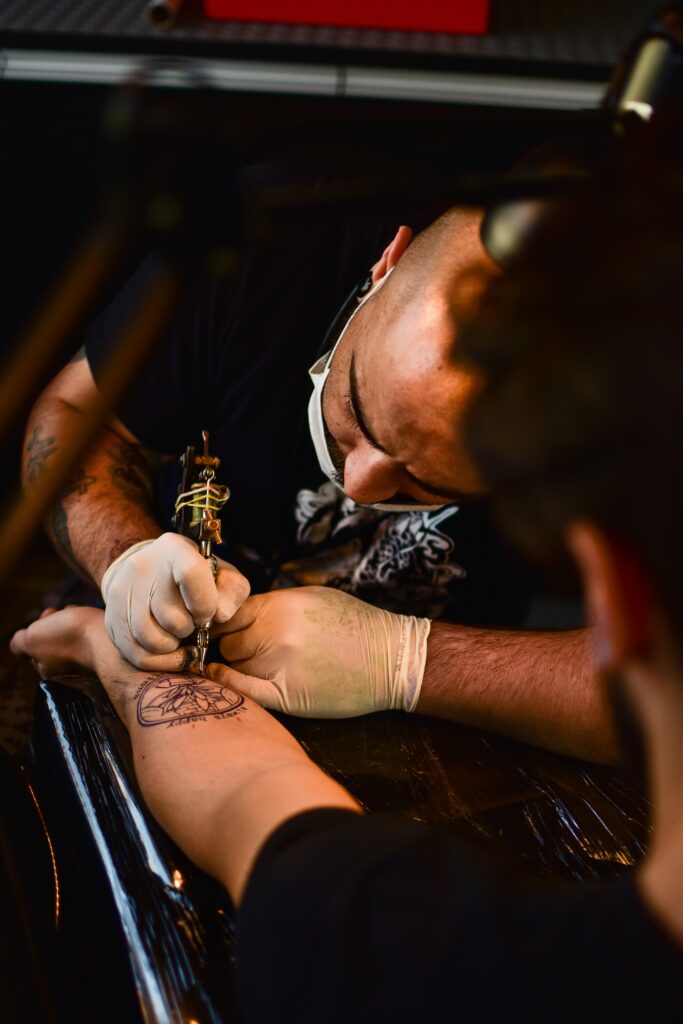
Let’s also acknowledge aftercare, the often-overlooked key to tattoo longevity. Think of it as the final chapter. Your aftercare directly impacts how well your tattoo heals. For example, Sarah, a dedicated athlete, meticulously followed her aftercare instructions. Her colorful sleeve healed quickly and beautifully. Conversely, Chris, a more absent-minded individual, neglected his aftercare. This resulted in a longer healing process and the need for touch-ups.
Next time you enter a tattoo studio, remember creativity can’t be rushed. The time it takes is part of its charm. The journey to a great tattoo is as special as the tattoo itself. Isn’t that the point of getting inked? This table shows tattoo styles and how body placement affects the time needed:
| Tattoo Style | Body Location | Timeline Considerations |
|---|---|---|
| Traditional | Arms, Legs | Relatively straightforward and quick to execute, moderate healing time |
| Neo-Traditional | Arms, Legs | Similar to traditional style, may have more intricate designs and color work, moderate healing time |
| Realism | Back, Chest | Highly detailed and intricate designs, time-consuming to execute, longer healing time due to larger size and more details |
| Watercolor | Anywhere | Requires delicate shading and blending techniques, time-consuming depending on the complexity, moderate healing time |
| Minimalist | Anywhere | Simple and clean designs, quick to execute, minimal healing time |
| Geometric | Arms, Legs | Precise lines and shapes, can be time-consuming depending on the complexity, moderate healing time |
| Japanese | Full body | Intricate designs covering large areas, time-consuming due to the size and complexity, longer healing time |
| Blackwork | Anywhere | Solid black ink with minimal shading, quick to execute, minimal healing time |
| Tribal | Arms, Shoulders | Bold and abstract designs, relatively quick to execute, minimal healing time |
| Dotwork | Anywhere | Complex patterns created with dots, time-consuming depending on the size and density of dots, moderate healing time |
Keep in mind that the timelines provided are estimates. Actual healing times can differ. Factors like the artist’s expertise, tattoo size, your skin type, and aftercare all play a role. Always seek personalized advice from a qualified tattoo artist for accurate timelines and detailed aftercare guidance.
How Long Does a Tattoo Take Depending on the Size?
Let’s start with the obvious: size matters. Like assembling IKEA furniture, larger tattoos demand more time. However, tattoos aren’t bookshelves. Their timelines aren’t solely based on size.
Small Tattoos
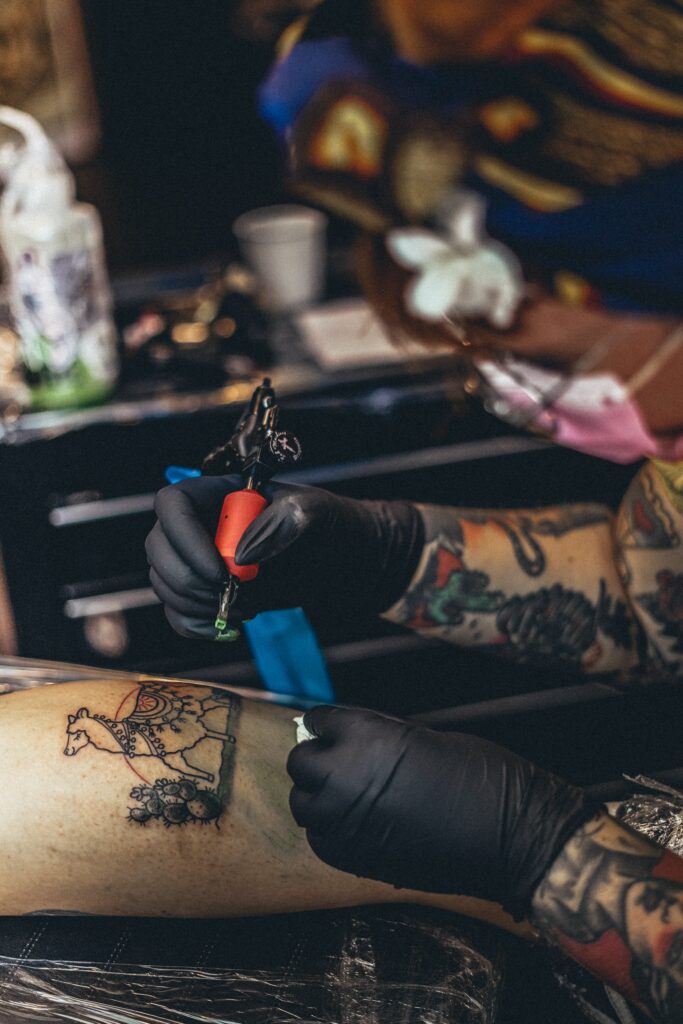
Small tattoos are quick, like a coffee break, not a long journey. Consider Leo, a young poet. He chose a tiny, simple quill on his wrist. It symbolized his passion for writing. The entire process, from the first drawing to the last detail, was fast. It took less than an hour.
Keep in mind that small doesn’t always equal fast. Consider Laura, who chose a bright, detailed mandala. Even though it was small, it took several sessions. More color, finer details, and complex locations can increase the time needed for your tattoo.
Medium Tattoos
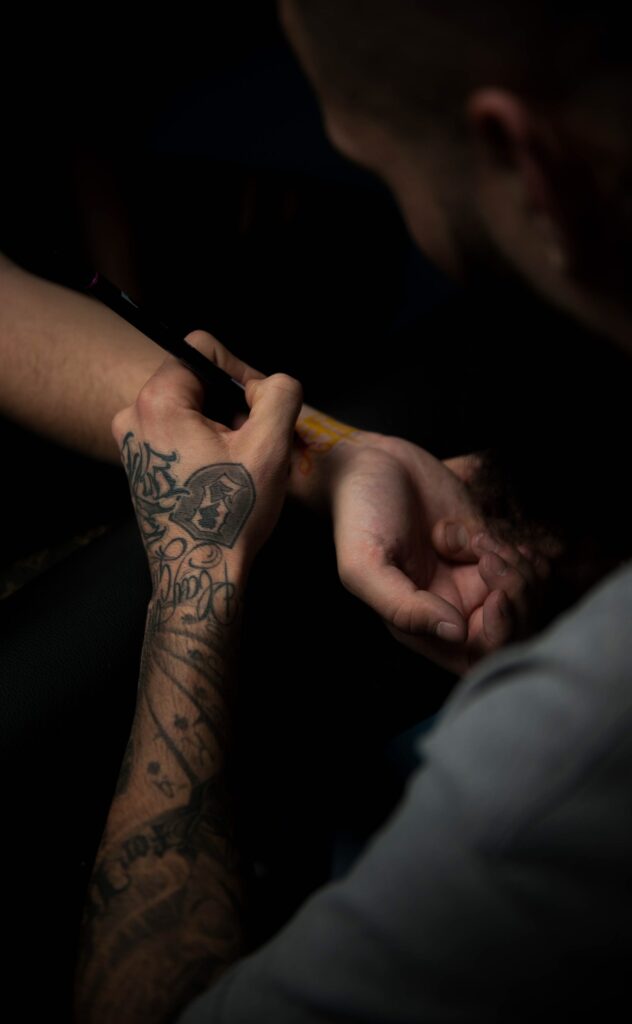
Stepping up in size, we encounter medium tattoos. These sessions typically last between 2 to 5 hours, similar to watching a movie. For example, Steve, a big fan of nature, got a palm-sized forest tattoo on his forearm. The different shades of green and the intricate details of the bark and leaves required more time compared to a simpler design of the same size.
Large Tattoos
Let’s explore large tattoos, the ink world’s ultimate endurance tests. Think full sleeves and back pieces – the tattoo equivalent of a lavish, multi-course feast. Take Maya, a devoted rock music fan. She chose to immortalize her favorite band with a full sleeve showcasing iconic album art. Her tattoo journey unfolded across several weeks, with sessions lasting hours. Through dedication, her passion became a vibrant, permanent tribute.
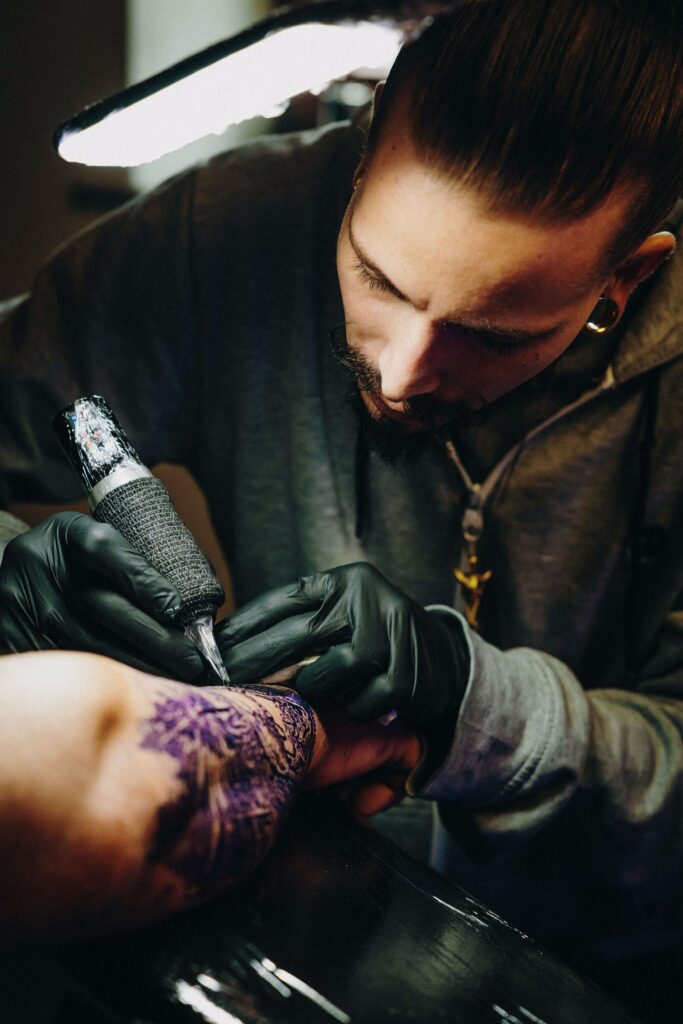
How Long Does It Take To Get A Tattoo Sleeve?
Let’s explore the tattoo sleeve. It’s a true art form, requiring 30 to 60 hours, or potentially longer. Take Mike, a comic book enthusiast. He chose a sleeve featuring his beloved superheroes. The complex details, color blending, and shading took over 80 hours. This process extended across almost a year.
Factors That Affect How Long A Tattoo Takes
Style
However, tattoo artistry isn’t just about dimensions. Other elements play crucial roles. The design’s style, its fine details, and the vibrancy of its colors all contribute to the overall complexity. Placement on the body is also key. Certain areas demand a delicate touch because of sensitive nerve endings and nearby bones.
Pain
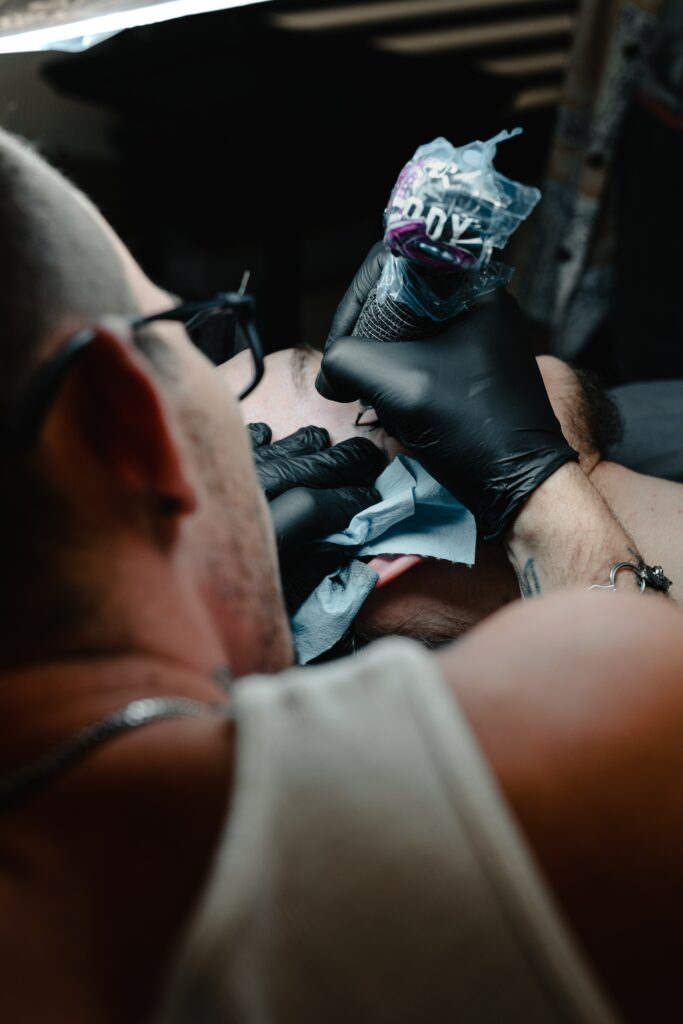
Your pain tolerance significantly impacts the tattoo experience. How well you endure the process dictates session length. Whether you’re stoic or need frequent breaks, your tattoo journey will be unique.
Tattoos are a timeless art form, inked onto skin. The buzzing needle creates a dance of artistry. It blends the artist’s skill with the wearer’s spirit. Embrace this captivating world. Enjoy the process as much as the final design. Remember, true art requires patience.
Conclusion
As our exploration of tattoos concludes, let’s recall some key insights. First, placement matters significantly. Your body offers diverse canvases, each with unique sensitivity, healing, and visibility considerations. The decision is yours: display your narrative openly or conceal it discreetly.
Tattoo prices in 2025 are incredibly diverse. A small, basic tattoo at a local shop could cost around $50. However, a high-end studio in a prime location might charge hundreds for a similar design. The final price depends on factors like complexity, the artist’s skill, the studio’s location, and the tattoo’s size.
